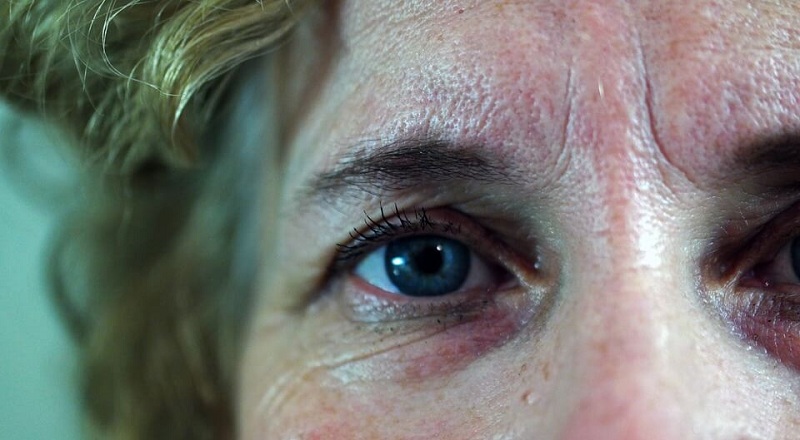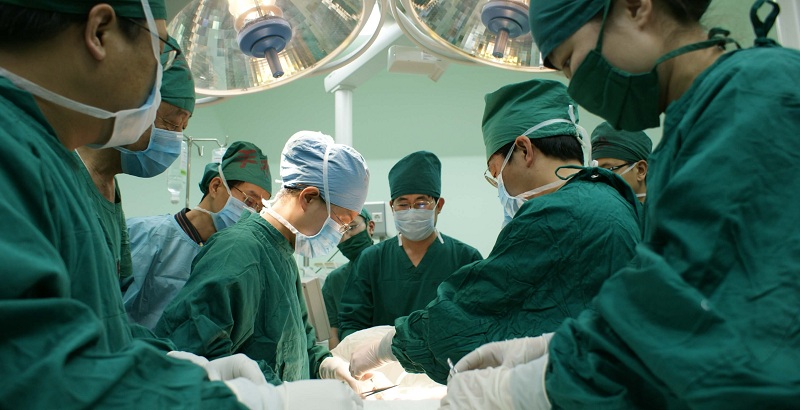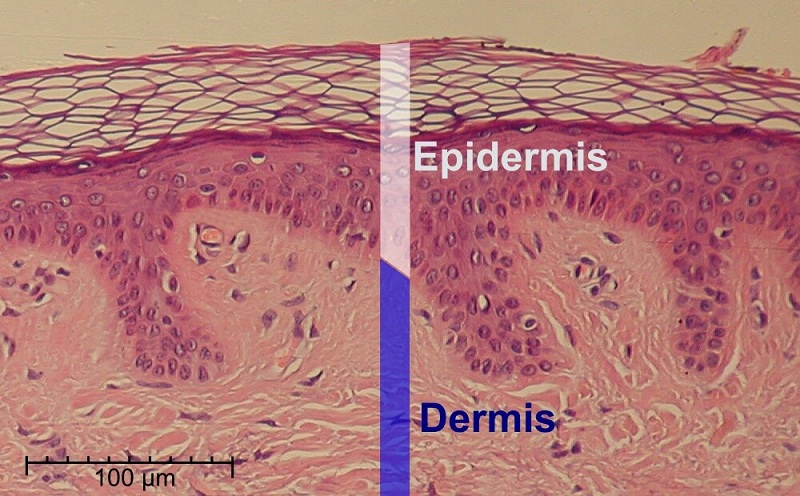Skin rejuvenation comprises cosmetic procedures that restore skin elasticity, flexibility, and texture. These fix the damaging effects aging has on the skin and render an overall pleasing appearance.
Signs that Your Skin Needs Rejuvenation
As time goes by, our skin’s superficial layer (epidermis) gets thinner, and the number of cells that provide our skin’s pigment (melanocytes) decreases. This leads to a thinner, paler, and clear-looking skin. Other signs of aging skin might be pigmented areas, especially in sun-exposed areas.
Elastosis is another consequence of aging. This happens when our skin’s elasticity and strength decreases and is due to all the changes in our body that influence the connective tissue.
An increased fragility of the blood vessels is normal for aging skin and can lead to petechiae (small red dots), purpuras (deposits of blood under the tissue, usually found in large, flat areas), or ecchymosis (bruising).
Dry, itchy skin is also a result of aging. At fault are our sebaceous glands, which produce less and less oil as we age. Although frequent no matter the gender, the condition affects women earlier in life.
Warts, keratosis, (rough patches on the skin) and other growths are also effects aging has on our skin.

Common Questions About Skin Rejuvenation
Which procedure should I choose?
This mainly depends on your age, the issue you want to fix, and how much you will invest. Since some are more invasive than others, you need to think about what you would be comfortable with. However, remember that some of the more affordable and non-invasive techniques might not have the same effect as more expensive and thorough ones.
What if I’m not happy with the results?
First, you need to have realistic expectations. There’s only so much a scalpel, a laser, or an injection can do for your looks. Expecting the impossible is a sure way towards disappointment. In addition, every procedure involves risks, even if it’s non-surgical. Those cases are rare, but complications happen. The best way to avoid them is to strictly follow your doctor’s instructions.
Causes of Skin Aging
Many factors contribute to the aging of the skin, both environmental and procedural.
Sun exposure
By far, the most damaging element to our skin, sun damage, causes elastosis, skin growths, and pigmented spots on our skin. Another consequence of sun exposure is the thickening of the skin, which occurs when the collagen is modified or damaged. Sun exposure also dries out the skin by gradually removing essential oils and moisture.
Improper nutrition
The absence, or small concentration of vitamins, fatty acids, antioxidants, and certain enzymes will lead to earlier skin aging. In addition, many foods available on today’s market contain chemicals like preservatives, colorants, or flavor enhancers that have a harmful effect on our whole body, including the skin.
Stress
Stress has damaging effects on our whole body, and our skin is no exception, since beauty mostly comes from within. It affects our immunity and can lead to changes in our DNA through endocrine, immune, and neuronal tempering, indirectly but efficiently damaging the skin.
Exposure to certain chemicals
Whether from cleaning products or from badly formulated cosmetics that contain harmful preservatives or artificial colorants, many chemicals damage and age our skin. Some work by drying it out, while others harm our cells’ structure and integrity. Even though we can control what products we use and thoroughly research their components, it is difficult to stay away from every harmful chemical.
Exposure to dry air
A dry environment will take away moisture from our skin, making it appear tough and flaky, which also has long-term effects in skin health. The worst part is, dry air is almost impossible to avoid, no matter the climate you live in, since summers are usually dry and indoor heating during winter removes moisture from the air.
Other afflictions
Other health issues can also lead to skin disorders, which can be difficult to diagnose in people over 40 years old, since they are usually mistaken for regular signs of aging:
- Heart and circulatory problems, like arteriosclerosis
- Diabetes
- Liver diseases
- Obesity
- Allergies
How Skin Rejuvenation Treatments Work
Although all of these procedures are generally safe, the risk of infection, bleeding, damage to the facial nerve, or necrosis is present. Hair loss has also been reported where the surgery used the hairline for incisions and sutures. Complications are, however, rare and occur usually because patients do not comply with proper care instructions while the wounds are healing.
Most Efficient Skin Rejuvenation Treatments
Surgical
Surgical skin rejuvenation methods most effectively restore facial symmetry through procedures like restructuring damaged tissue or skin removal and alteration. It’s most known by the name “facelift”, although it involves working on certain other areas.

Browplasty (forehead and brow lift)
This lifting procedure fixes the drooping eyebrows or the deep wrinkles on the forehead, also known as “worry lines”. The most common technique uses an endoscope, but open surgery might be necessary sometimes. Usually, 3 to 5 incisions are enough for the endoscope to efficiently remove excess skin.
Blepharoplasty (eyelid lift)
The most common form of blepharoplasty makes use of a scalpel. Nonetheless, there are cases where a laser can efficiently remove excess skin from the upper or lower eyelids. Eyes will regain their youthfulness and appealing shape affected by aging and drooping skin.
Rhytidectomy (facelift)
There are plenty of effective techniques and procedures that can be identified as a facelift. The best one for each individual being determined after a thorough consultation. A facelift involves two or more surgical skin rejuvenation interventions. Every procedure targets a different area of the face. Also, fixing two or more effects of skin aging at a time can be more convenient.
- SMAS lift (Superficial Musculo Aponeurotic System lift) readjusts and secures the ligaments that hold the cheek fat
- Deep-plane lift restores the proper depth of the nasolabial fold by readjusting cheek fat and some muscles in that area
- Composite facelift repositions the deep layers of tissue, while also fixating the muscle responsible for closing the eyelids, and fixing the orbicularis oculi ptosis (the “falling” of the upper eyelids)
- Mid facelift addresses the area between the cheeks and is recommended to patients that need to benefit from a skin rejuvenation surgery, without going through a full facelift. It can fix the sagging of the cheeks and the folds or laxity from around the nose. The procedure comprises repositioning the fatty layers over the cheekbones with a few incisions that leave no scars.
- Mini facelift is very similar to a full facelift. The main difference between the two is the lack of a neck lift, present in the full version of a facelift, which makes a mini facelift much less invasive. It fixes the deep nasolabial folds and general sagging of the facial structures. An endoscope is used to reposition the fatty and soft tissues that need readjusting, followed by sutures to reposition the skin. This skin rejuvenation solution is most suitable for people who want to fight premature aging.
- Thread lift, also known as a feather lift, is one of the least invasive surgical procedures. It is a great way to slightly improve eye, forehead, or nasolabial fold laxity. It uses a barb suture to readjust the position of the skin without removing or cutting any of it. If done correctly, the threads will remain hidden.
- Subperiosteal facelift is a very effective, but also very invasive skin rejuvenation technique. It consists of completely detaching the soft tissues from the facial bones and repositioning them in a more aesthetically pleasing manner.
- Skin-only facelift is suitable for those whose skin lost its elasticity. This is a temporary fix, that lasts up to a year after the surgery.
- MACS facelift (Minimal Access Cranial Suspension lift) uses a small incision to vertically elevate sagging facial features and suspending them upwards. It involves fewer risks than a traditional facelift, since less skin is removed and the incision is smaller.
Laser resurfacing
This procedure uses a laser to fix the skin on an atomic level by dissociating the molecular bonds. It can fix wrinkles of any kind, solar lentigines, scars, stretch marks, or other skin imperfections. It’s a very customizable form of skin rejuvenation, and is widely accepted as one of the most effective treatments.
Nd:YAG laser
This innovative technology is widely used in most branches of medicine, from oncology to ophthalmology. In cosmetic surgery, the laser is effective in destroying cellulitis, certain skin marks, unusual vascular tracks, or permanent hair removal.
Platelet-rich fibrin matrix
Also known as vampire filler, this technique uses the patient’s blood platelets as a dermal filler. The specialist injects the platelets under the layers of the skin to fill out creases and wrinkles and rejuvenate the skin.
Non-Surgical
These are usually meant to restore youth in specific areas and reduce wrinkling or laxity and eliminate scar tissue and hyperpigmentation.
Botox injections or other neuromodulators
The injection of botulinum toxin or other neuromodulators directly into the facial muscles will tighten the skin. It will also prevent the development of wrinkles, even though effects are temporary and can last up to 5 months. They work by partially paralyzing the muscles, which will tighten and smooth out the skin. With time, the muscles will relax and the wrinkles will return.
Tissue fillers
Hyaluronic acid works by absorbing water and swelling when in gel form, resulting in a smooth look for the skin. Its effects can last up to 12 months if you use the chemically modified substance, and up to 6 if you use it in its pure, natural form.
Calcium hydroxylapatite is a mineral usually found in bones or teeth. When used as a filler, its particles are mixed in with a gel and injected under the skin. Its effects are some of the longest-lasting, with up to 18 months between treatments.
Collagen is a structural protein that gives our skin its structural support, elasticity, and strength. With age, the production of collagen decreases, and its beneficial effects on our skin are diminished. The substance is injected into the dermis, where it starts efficiently working on all the layers of the skin. Although very popular, it has the shortest effects, lasting for only 4 months.
Poly-L-lactic acid is a man-made polymer that’s also biocompatible. It has long lasting effects if provided often within a few months, with up to 2 years between treatments.

Chemical peels
Usually used to restore the smoothness of the skin, chemical peels remove the superficial layer of dead cells and lead to a smoother, younger looking and rejuvenated skin. From alpha or beta hydroxy acids to retinoic acid or croton oil, the chemicals specialists use influence the depth of the peel.
Microdermabrasion
This procedure is non-chemical and uses micro-crystals to remove the layer of dead skin cells and rejuvenate the overall look. While easier on the skin than chemical peels, its effects are superficial. It’s most suitable for people no older than 50 years old.
Fraxel laser treatment
An innovative and ingenious technique in modern cosmetics, this laser treatment works by accelerating the rate at which skin cells regenerate. It efficiently removes acne, scars, stretch marks, enlarged pores, wrinkles, discoloration, dark spots and other lesions, or texture faults.
Photorejuvenation
Using lasers and IPL (Intense Pulsed Light), it is most efficient against wrinkles, unusually colored spots, texture faults, or other skin defects, by superficially wounding the skin and forcing it to create new cells. Its principle is very similar to Fraxel skin rejuvenation, but the techniques specialists use widely differ.
How to Rejuvenate Your Skin Naturally
The first and most important step in rejuvenating your skin naturally is to switch to a healthy lifestyle. Remember, beauty comes from within. This includes:
- Hydrating
- Having a healthy diet overall, with plenty of vitamins and minerals
- Sleeping at least 7 or 8 hours per night
- Exercising

Moisturizing is the most important thing you can do for your skin. There are plenty of natural ingredients that efficiently moisturize the skin. A mix of milk or yogurt, honey, olive/coconut/almond oil, oatmeal, green tea, cucumber, papaya, banana, avocado, apricot, tomatoes, and basically any fruit you can find within reach will work great. These can also create face masks.
Daily facial massage is another must if you want to rejuvenate your skin. This is because it will improve blood flow and allow more nutrients to reach the skin.
Do’s & Don’ts of Skin Rejuvenation
DO take care of your skin; always use sunscreen and drink lots of water
DON’T use cheap or untrustworthy cosmetics, whether you’ve undergone skin rejuvenation treatments or not
DO use an air humidifier during winter months or whenever necessary
DON’T use sugary or salty foods and drinks since they are very harsh on your skin
DO thoroughly research every procedure’s risks and always get help from your doctor when choosing the best one for you
DON’T pick or pull sutures and never ignore complications if you underwent cosmetic surgery
No matter how much care and time you invest in the health and wellbeing of your skin, someday you are bound to find yourself in need of a quick skin rejuvenation treatment. It’s up to you to choose which one you are the most comfortable with, from surgical solutions to home remedies. Regardless of the treatment you are most comfortable with, taking care of your body, exercising, and eating well is a must if you want efficient and long-lasting results.
